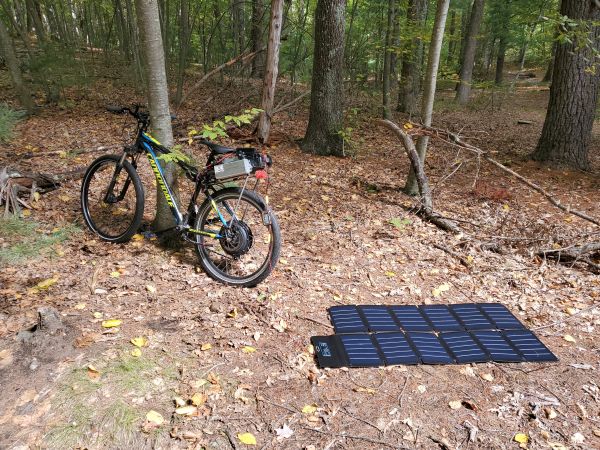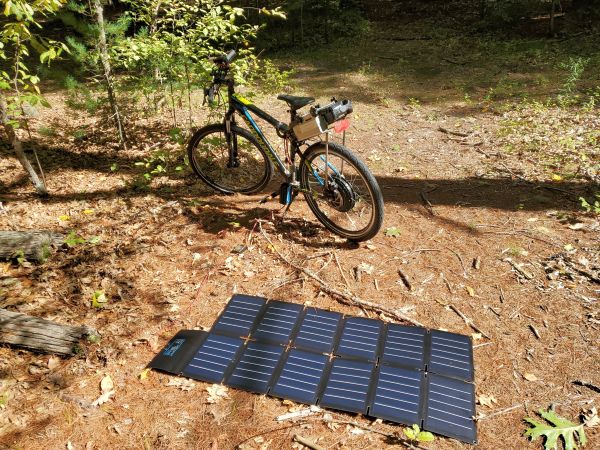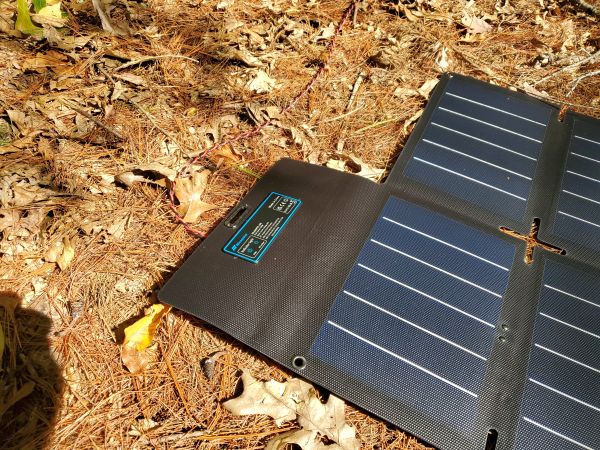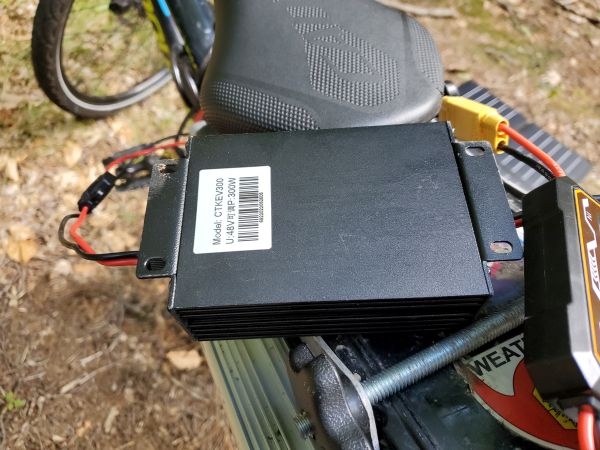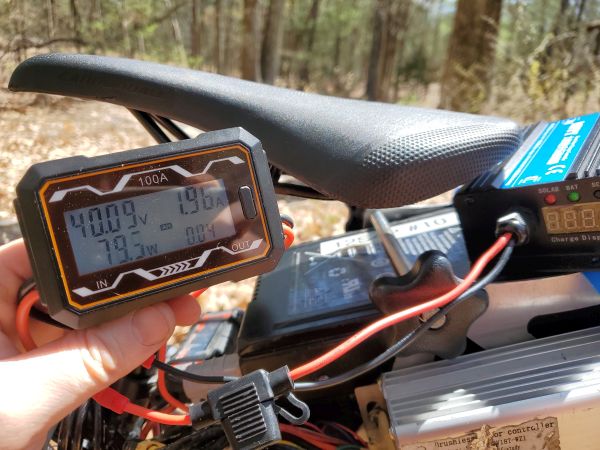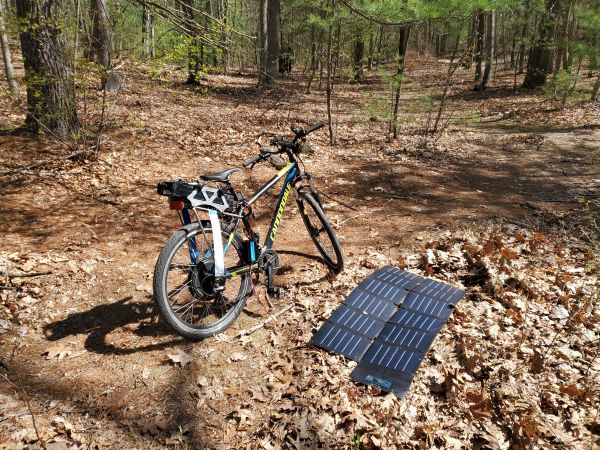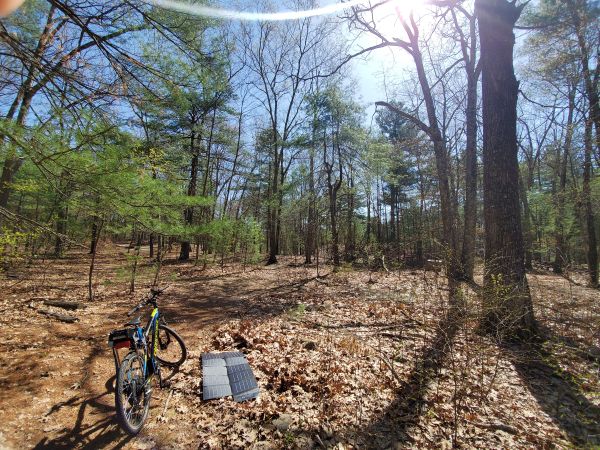
Dane Kouttron
This project / writeup is in progress, check back for more soon!
Foldable solar panels and e-biking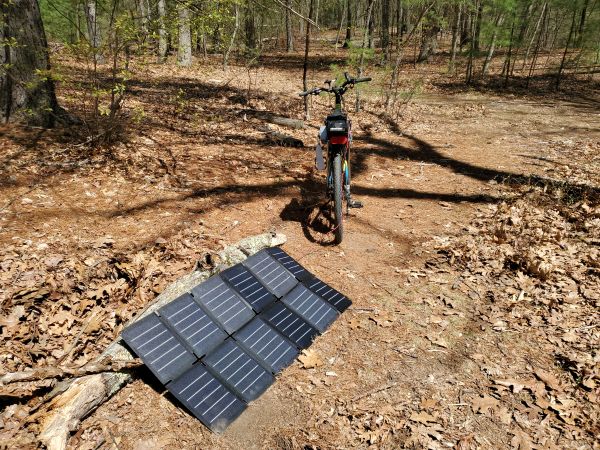 Lightweight folding solar panels transitioned from a dubious curiosity to legitimately excellent recently, with some kits boasting +20% efficiency. By bonding the PV cells to a semi-rigid plastic the panels can fold up into a flat pack while still offering weather resistance. Best yet, these panels can be found for a somewhat reasonable ~150$ / 100w. Besides being exciting, I'd like to do some evaluating to see how well these would fare for a long solar e-bike run. Hammock camp overnight, deploy the solar array in the evening and wake up late to a somewhat recharged chariot. Are the commercial offerings up to the task? The following details using these panels to charge an e-bike, thoughts on available options for traveling and an attempt to make a rugged portable panel to compete with these commercial offerings. |
||
WATT are you up to?A converted mountain e-bike is roughly 20-35 watt-hours (wh) / mile without pedal assist, so in an ideal world, a 100W panel could net you 5 miles of travel every hour its illuminated. This is not rapid-charging by any means but a sunny morning could net you a lot of assist on mountain climbs. Does lugging around a panel and charge controller really net you that extra benefit? We can dig into this below. The nominal plan is to find a 80-200W solution that is portable and rugged for solar bike camping four a touring trip. There's nominally no real benefit from smaller than 80W panels as you're trading off time and distance. At some point there's a space constraint but with some creative storage its more than possible to hide away 100w of panels in some bog standard panniers. Finding a 'wireless' 80W of charging out in a remote spot is such a wild experience, the following details a deeper dive into solar e-bike charging. Off the shelf Foldable PanelsI tried a few off the shelf options, the cheapest portable options are less portable and no surprise, the more pricey panels per watt are actually way more reasonable for storage. My first test was just using these to recharge my e-bike when i was out working remotely. The test was pretty straightforward, haul the panel and boost-charger out to a remote work area, set it up for charging and record my observations. The first solar panel candidate: FUNAURORE "120W Portable Solar Panel"I lucked out and found this 120W portable panel [link] for 79.99, it now runs for slightly under 200$ so lets take a look to see how well it works. On first pass, it does work! It unfolds reasonably well and the connector is readily available. This panel is somewhat-portable, it folds into a thin briefcase form factor. When folded up for stowage it comes in at a somewhat awkward 21" x 14" x 1". This doesn't really fit in a pannier, but maybe some of the larger form factor ones could work. The panel itself does have some perks, the solar dc output is via an XT 60 connector, or the de facto hobby yellow colored connector. This is excellent as while this is not a locking connector it is far less easy to accidentally come loose versus a barrel jack. Generally speaking voltage sources don't use the male connector so its a bit odd to see a male XT60 here. The panel also has some lightweight folding legs for propping the panel up to get better solar visibility, these work surprisingly well. 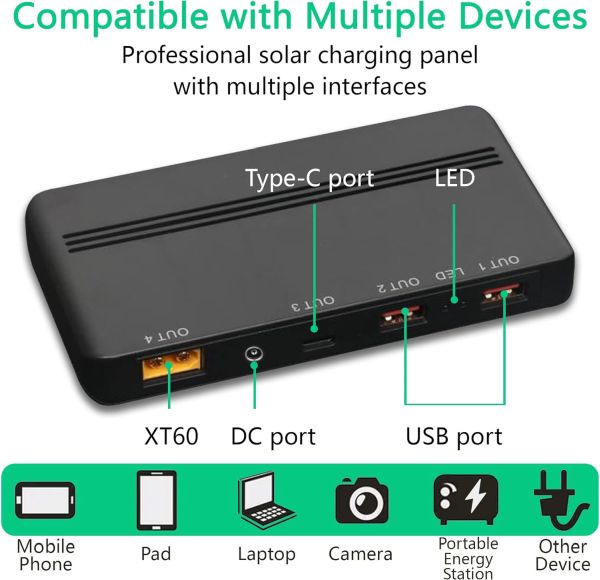
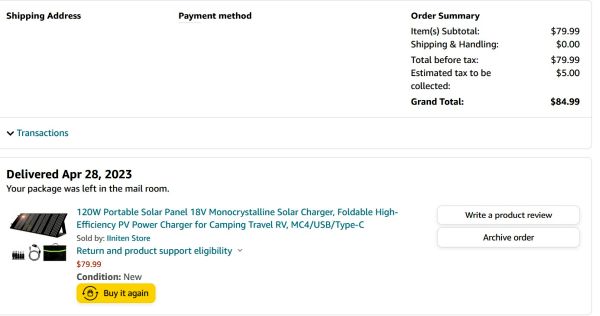
Overall this is a great 'bring for a vehicle camping or short distance hike' panel, but its folded up size is somewhat awkward to fit in a bag or a bicycle pannier. Testing in the northern latitudes of videocassettes and New Hampshire. Netted 92W peak which is fairly reasonable given the significantly less light available up north. This unfortunately is a no-go for e-bike touring trip . activities. The Second solar panel candidate: Nicesolar PSP-100WThe nicesolar panel is a lower peak wattage rating, but it is also a much more convenient size. I was able to get one on amazon [link] and the price seems to jump around a bit based on camelcamelcamel: [link] nominally with coupons it comes out to 100W for 150 USD. The Nicesolar panel does also come with an XT series connector for DC output, this time an XT-30, which is smaller but plenty for the relatively low currents present from these panels. The panel itself is rather nice but has no nominal structure, and really wants to just lay down on the ground. The construction of this panel is annoyingly good. It appears the panels are covered in ETFE laminated onto some underlying plastic reinforced fabric. Aside from waterproofing the small power adapter area this is a remarkably good candidate for e-cycling. So far I've schlepped it about on two dozen 'remote' work days and it has worked great. Re-positioning is somewhat a chore with these as they really would prefer to just sleep on the ground, so sorting out a better option for positioning / angling it would be great. 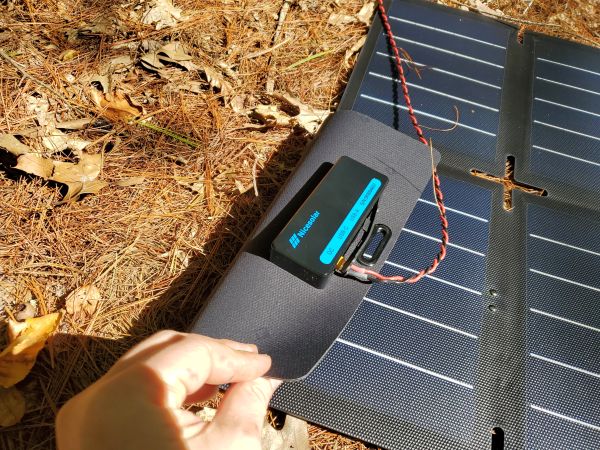
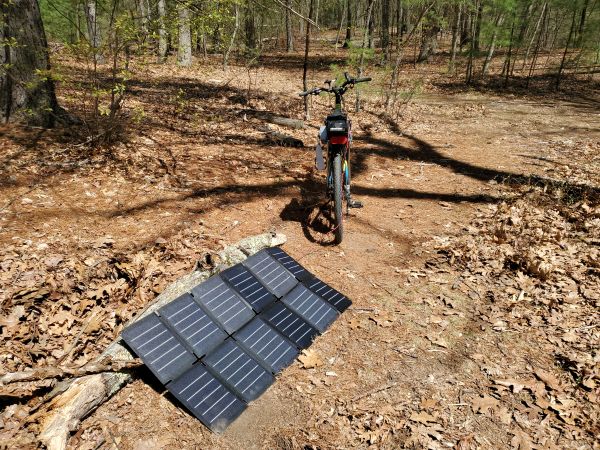
One of the things I noticed was how much of an effect propping the solar panels up on the bicycle had. I used an awkward tree branch but if I located some small collapsible tent poles its likely they could work and turn the fold-able panel into a 'stretcher' making it easy to prop against a bike and still remain portable. Switching from ground mount to angled stick mount had a 30% power improvement, and given this testing was occurring in October in the northeast, netting 70.8 W was impressive. Maybe two of these in opposing panniers would do the trick for mobile charging. 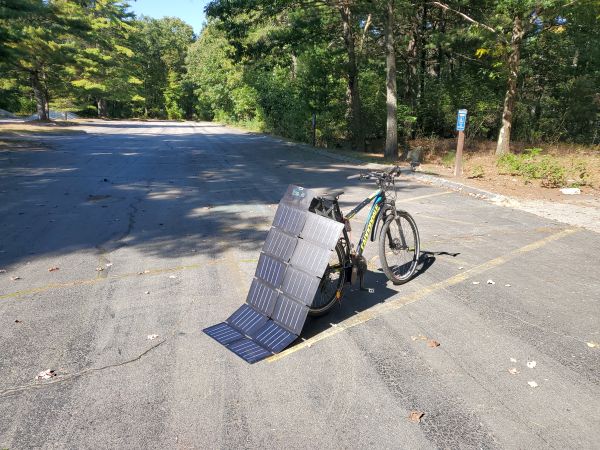
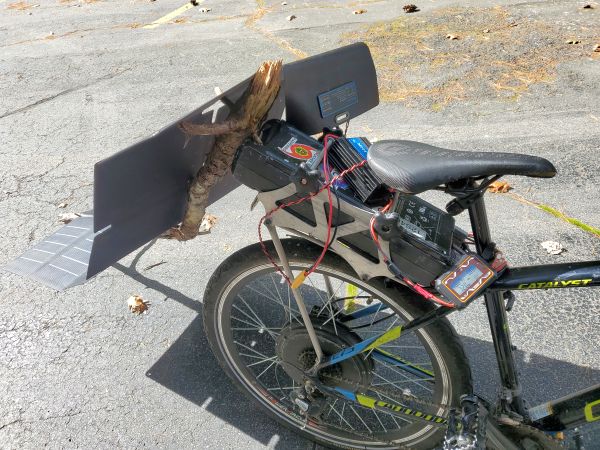
Here's a quick clip of some unseasonably warm October e-cycle charging. The Nicesolar 100w panel propped up delicately with a large tree branch to slurp up as many photons as possible. DIYLet's do a *volume* challenge. For bike touring space is pretty constrained, and while mass is also a constraint its slightly less of an issue. Can we fit more solar in the same size box? are there different panel technologies vs monocrystaline that are better applied to e-cycling? A while back I stumbled onto what I thought were uni-solar's 6.2W cells, they are a really curious thin-film flexible panel. I was able to get 30+ cells for a fairly good deal and they have been subsequently collecting dust, while their efficiency is very low they appear to be super impact tolerant, remarkably thin and very flexible. Their availability dropped somewhat as of today, at the moment they go for 4.20$ / 'cell'. As such information on these cells is starting to fadefrom the net. Lets collect those details here. First off, I was really surprised that these are actually triple junction cells. We also learn that the backing is stainless steel which is impressive given the price bonus generally associated with stainless. From this eBay listing [link] we get a lot of useful information. If we wanted 100W, we would have a 10" wide, 15 foot long panel. This would be somewhat difficult to move, align or hang, so its likely we're gonna opt for something a bit more square. Oddly these are listed as 7.4W cells but appear identical. These cells are old as in 2011-era manufacture, which at the time of writing was 12 years ago. We do fortunately have plenty of these cells to make a 100W+ solar blanket so lets see what we can come up with. 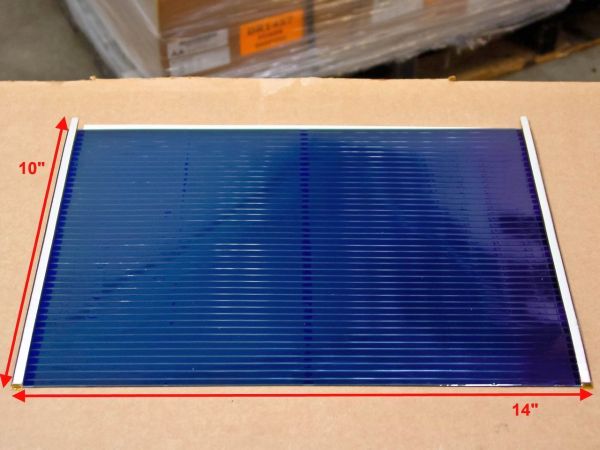
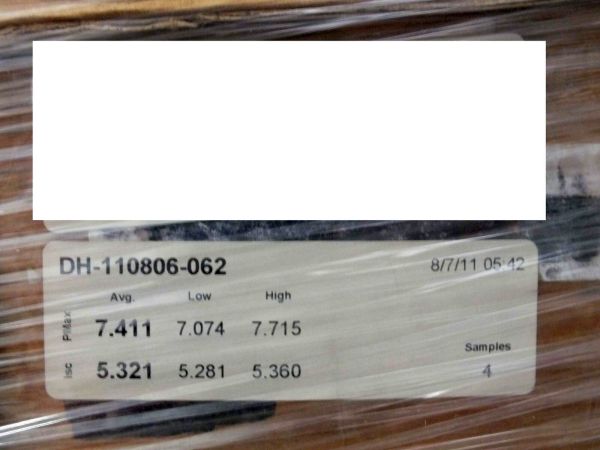
The eBay vendor actually had some great photos of the panel arrangements and how the panels interconnect. Each panel on average is 5.3A at 1.4V, given that our boost-charger is going to prefer something above 15V we're going to aim for a solar blanket roughly 16 + cells, to hit 120W. While this may end up comically large, the cells are so thin that volumetrically this might work out. 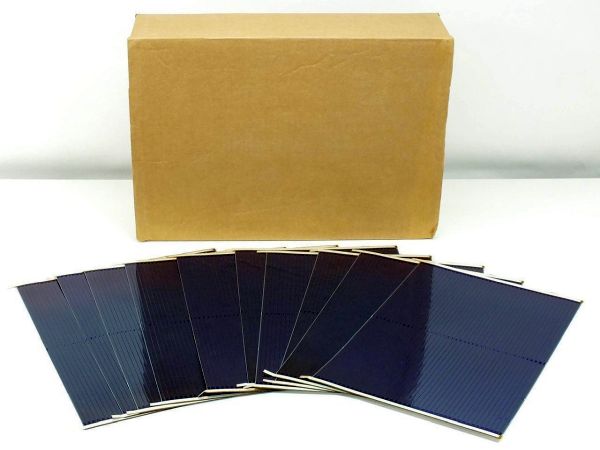

I kinda just want 'a solar blanket', like a picnic blanket that I can throw out, maybe pin down with a rock or two and slurp up some serious photons. Something that will survive if a cell gets damaged and otherwise just works.
How can we protect the cell surface without interfering with the solar input? These panels fit in the 11x17 form factor for laminated paper. Can I just run these through a large format laminator? Given that these cells have much more thermal mass than a sheet of paper i will likely need to pre-warm the cell before running it through the laminator, or, run it through a dozen times. MPPT Solar Boost ChargerThis little gadget is my favorite eBay find as of yet, it is exactly what I wanted a smallish dc/dc converter that can boost up some nominal PV input and charge an external battery all while doing MPPT optimization. I opened it up below but these are now on amazon [link] and eBay [link]. These are generally listed as Model: CTKEV300,or "MPPT Boost Solar Charge Controller" It's so oddly perfect for portable bike charging. The display on the side is a little clunky, it is four seven-segment displays used to display and set target battery voltage, input PV voltage and output charge current. 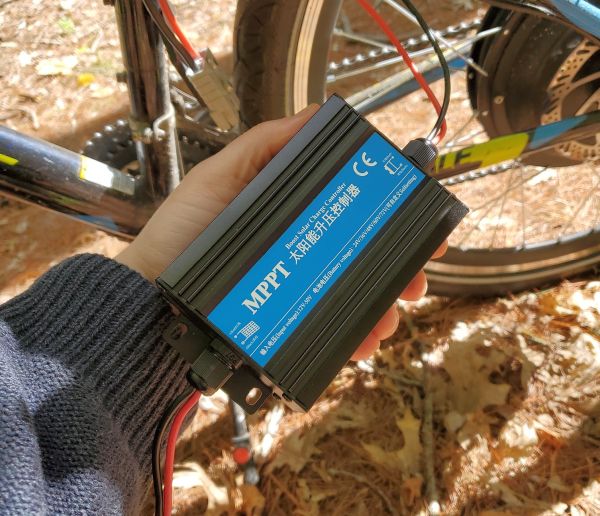
Keeping track of watt-hours / ampere-hoursI've been a fan of this [link] watt-meter, this is a hobby-grade product but it seems to actually have better low-range resolution than the standard dorky RC wattmeter. It is unfortunately not terribly waterproof. The display can also get too hot and stop displaying which is not great. 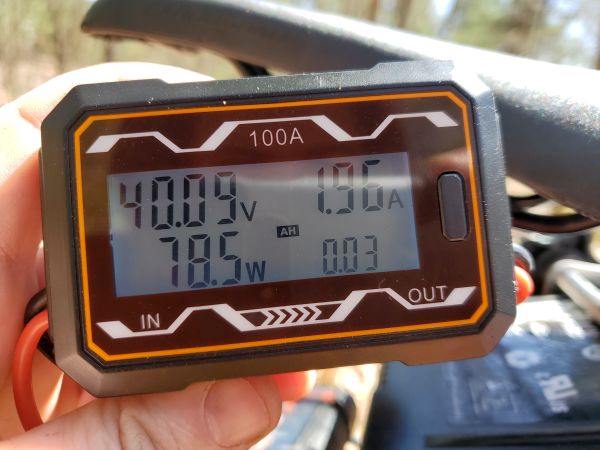
Have you noticed that there are no
advertisements or ridiculous pop ups?
|
Post your comments! |
|
Comment Box loading
|
